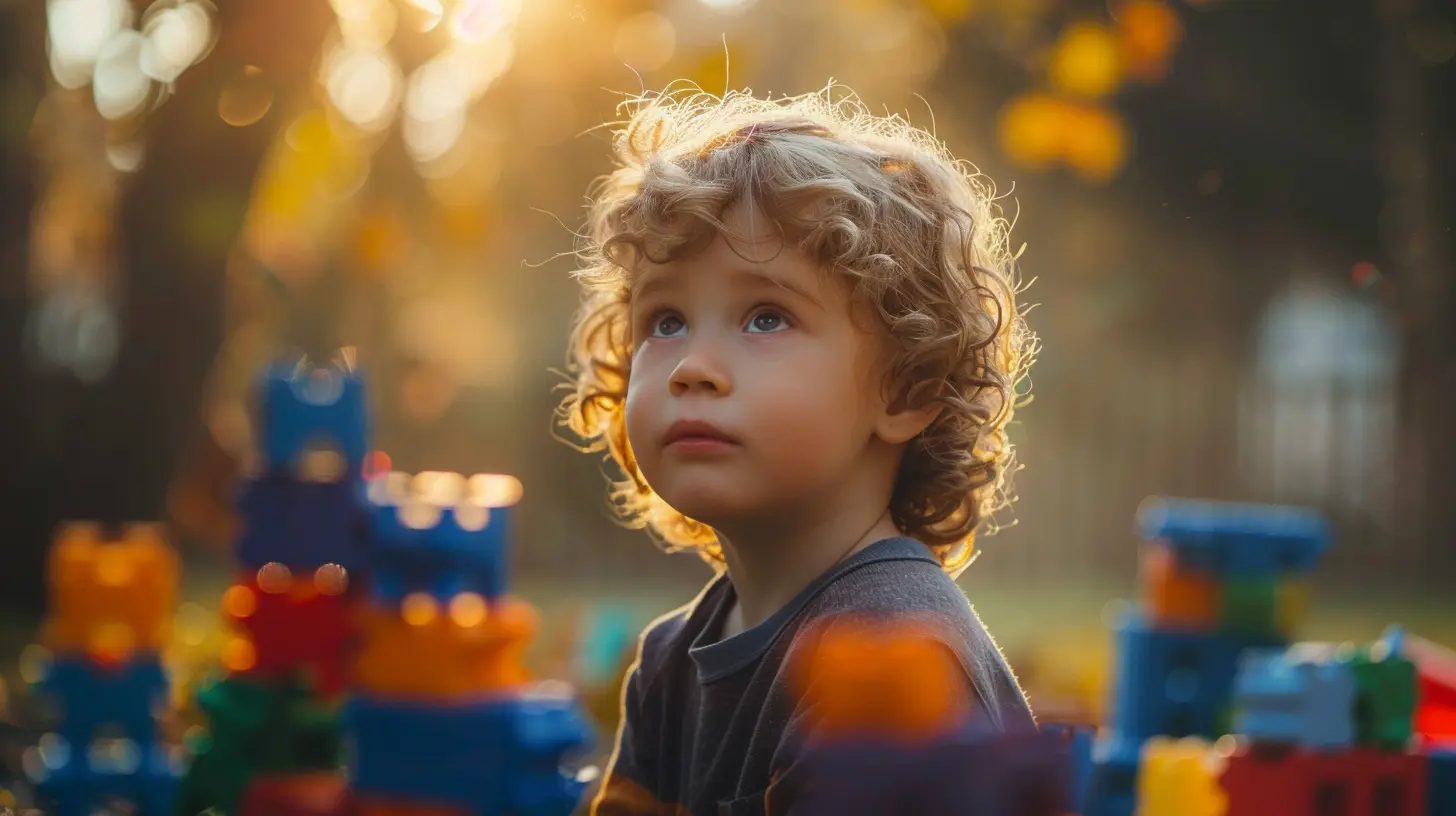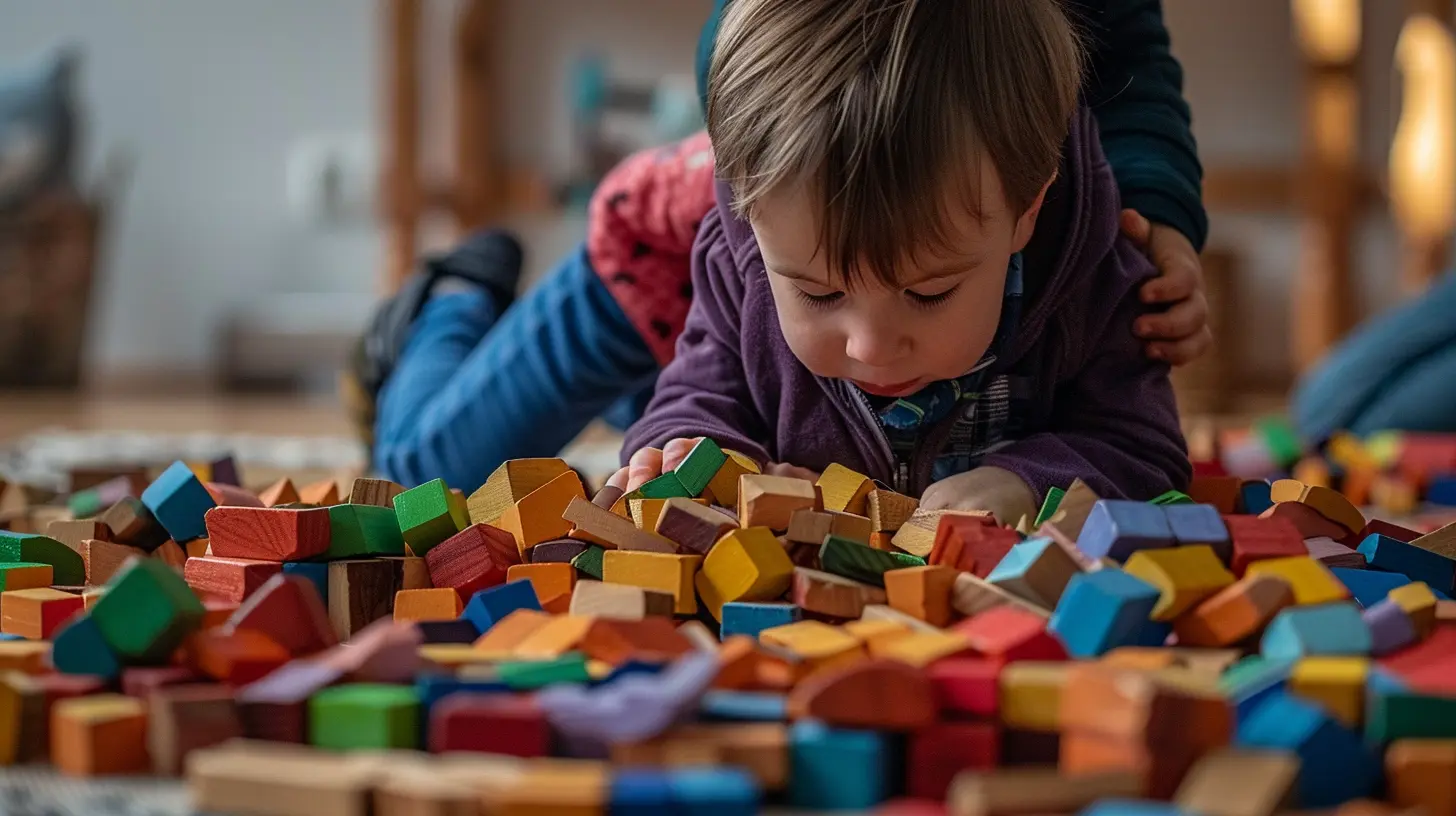22 December 2024
When it comes to helping children navigate the challenges they face, traditional talk therapy isn't always the best approach. Kids, especially younger ones, don't always have the vocabulary or emotional maturity to express what they're going through. They may not even fully understand their own feelings. So, what’s the alternative? One increasingly popular method is play therapy. This therapeutic approach allows children to express themselves in a way that feels natural to them—through play. But what exactly is play therapy, and how does it fit into child counseling?
In this article, we’re going to dive deep into the world of play therapy, exploring how it works, why it’s so effective, and how it supports children in overcoming emotional and psychological challenges. Let’s get started!

What Is Play Therapy?
Okay, so before we get into the nitty-gritty of how play therapy works, let's define it. Play therapy is a form of counseling or psychotherapy where play is used as a medium for communication between the therapist and the child. This type of therapy is particularly useful for children aged 3 to 12, though it can be adapted for older kids and even adults.In essence, play therapy allows children to use toys, games, and creative activities to express their feelings, thoughts, and experiences. It’s not just about having fun (though that’s part of it!). It’s about using play as a tool for healing, self-expression, and problem-solving. Imagine it like this: where adults might vent to a therapist about their problems, kids use their play to "talk" about theirs.
Why Play?
Children are naturally wired to play. It's how they learn about the world, how they make sense of their experiences, and how they express their emotions. Just as adults might use words to communicate their feelings, kids use play. Ever noticed how a child might act out a fight they saw at home using their stuffed animals? That’s their way of processing what happened.In the context of therapy, play becomes an avenue for children to explore their emotions and experiences in a safe and supported environment. The therapist observes and interacts with the child during play sessions, helping them work through emotional struggles that might be too overwhelming or complex to verbalize.

The Benefits of Play Therapy
So, why is play therapy so effective? What makes it stand out as a tool in child counseling? Let’s dive into some of the key benefits.1. Facilitates Emotional Expression
As mentioned earlier, children often struggle to articulate their feelings. They might know they’re sad, angry, or scared, but they don’t always know how to explain why. Play therapy gives them a way to "talk" without actually talking.For instance, a child who’s feeling anxious might repeatedly build walls with blocks during a session. This could symbolize their desire to protect themselves or keep others at a distance. A skilled therapist can help the child explore these patterns and guide them toward understanding their emotions.
2. Promotes Problem-Solving Skills
Play therapy often involves role-playing, decision-making, and imaginative scenarios that encourage problem-solving skills. For example, a child might act out a situation where they’re facing a "villain" or obstacle. Through play, they can experiment with different solutions, building up their confidence and resilience in the process.3. Enhances Communication
In play therapy, the child is the leader, and the therapist follows their cue. This dynamic empowers the child to communicate in a way that feels natural to them. Over time, children often become more comfortable expressing their feelings, which can lead to improved communication outside of therapy as well—whether it's with parents, teachers, or peers.4. Builds Trust and Rapport
One of the most significant challenges in any form of therapy is building trust between the therapist and the client. With children, this can be even more difficult. However, play therapy creates a non-threatening environment where children can feel safe and understood. The act of playing together fosters a sense of connection and trust, which is essential for effective therapy.5. Helps Process Trauma
Children who have experienced trauma—whether it’s abuse, neglect, or the loss of a loved one—often struggle to process these events. Play therapy provides them with a safe space to explore their feelings and begin the healing process. For example, a child who has witnessed domestic violence might use dolls to reenact what they saw, giving the therapist insight into their emotional state.6. Encourages Emotional Regulation
Kids can have a hard time regulating their emotions, especially when they’re dealing with big feelings like anger, sadness, or fear. Play therapy helps them practice managing these emotions in a controlled environment. Through play, they can learn healthy coping mechanisms and emotional regulation strategies that they can apply in real life.
How Play Therapy Works
Now, let’s get into how play therapy is actually conducted. It’s not just about sitting a child down with a bunch of toys and hoping for the best. There’s a structure and methodology behind it.1. The Initial Assessment
Before play therapy begins, the therapist will typically conduct an initial assessment. This involves talking to the child’s parents or caregivers to gather background information and understand the child’s specific needs. The therapist might also observe the child to get a sense of their behavior and emotional state.2. Creating a Safe Environment
One of the core principles of play therapy is creating a safe, supportive environment where the child feels comfortable expressing themselves. The therapy room is often filled with a variety of toys, art supplies, and games that are carefully chosen to encourage self-expression. This isn’t just a random collection of toys—it’s a therapeutic tool kit!3. Directive vs. Non-Directive Play Therapy
There are two main types of play therapy: directive and non-directive.- Directive Play Therapy: In this approach, the therapist takes a more active role, guiding the child’s play in a specific direction. For example, the therapist might ask the child to act out a particular scenario or use a specific toy to explore a topic.
- Non-Directive Play Therapy: Here, the child is in charge. The therapist allows the child to lead the session, choosing whatever toys or activities they’re drawn to. The therapist observes and offers support but doesn’t interfere unless necessary. Non-directive play therapy is based on the belief that children are naturally inclined to work through their issues if given the space to do so.
4. The Therapeutic Process
During the play sessions, the therapist closely observes the child’s behavior, choices, and interactions with the toys. They may ask open-ended questions or offer gentle prompts to help the child explore their emotions and thoughts. Over time, the therapist and child develop a rapport, and the child begins to feel more comfortable expressing themselves.5. Parental Involvement
Parents or caregivers often play a role in the therapeutic process. After all, they’re the ones who spend the most time with the child. The therapist might offer guidance on how parents can support their child’s emotional development at home, and in some cases, parents may be invited to participate in the sessions.
Common Issues Addressed Through Play Therapy
Play therapy can be used to address a wide variety of emotional, behavioral, and psychological issues in children. Some of the most common include:- Anxiety and stress: Children who struggle with anxiety may use play therapy to explore the root causes of their worries and develop coping strategies.
- Behavioral problems: Play therapy can help children understand and manage challenging behaviors like aggression, defiance, or hyperactivity.
- Trauma: As we mentioned earlier, play therapy is particularly effective for children who have experienced trauma, allowing them to process their experiences in a safe, controlled environment.
- Grief and loss: Children who have experienced the death of a loved one or other forms of significant loss can use play therapy to work through their grief.
- Social difficulties: Some children struggle with making friends or navigating social situations. Play therapy can help them develop better social skills and improve their relationships with peers.
Does Play Therapy Really Work?
You might be wondering, “Does this actually help?” The short answer is: yes! Numerous studies have shown that play therapy can be highly effective in helping children manage emotional and behavioral challenges. It’s particularly beneficial for younger children who may not be able to engage in traditional talk therapy.Of course, like any form of therapy, the effectiveness of play therapy depends on various factors, including the child’s specific needs, the therapist’s skill level, and the involvement of the parents or caregivers. But overall, play therapy has been shown to improve emotional well-being, enhance communication, and promote healthy development.
Conclusion: Play Is More Than Just Fun
In child counseling, play therapy offers a unique and powerful way for kids to express themselves, work through their emotions, and develop essential life skills. By meeting children where they are—in the world of play—therapists can help them heal and grow in ways that feel natural and comfortable.So, the next time you see a child building with blocks, painting a picture, or acting out a story with their dolls, remember: they could very well be working through something big. Play is serious business when it comes to emotional health, and play therapy is a vital tool in the world of child counseling.










Landon Sawyer
Play therapy: where tiny couches and stuffed animals become the ultimate therapists! Who knew that a rubber chicken could unlock the emotional depths of a child's psyche? Talk about putting the 'fun' in functional mental health! 🐥🛋️
February 2, 2025 at 5:50 PM